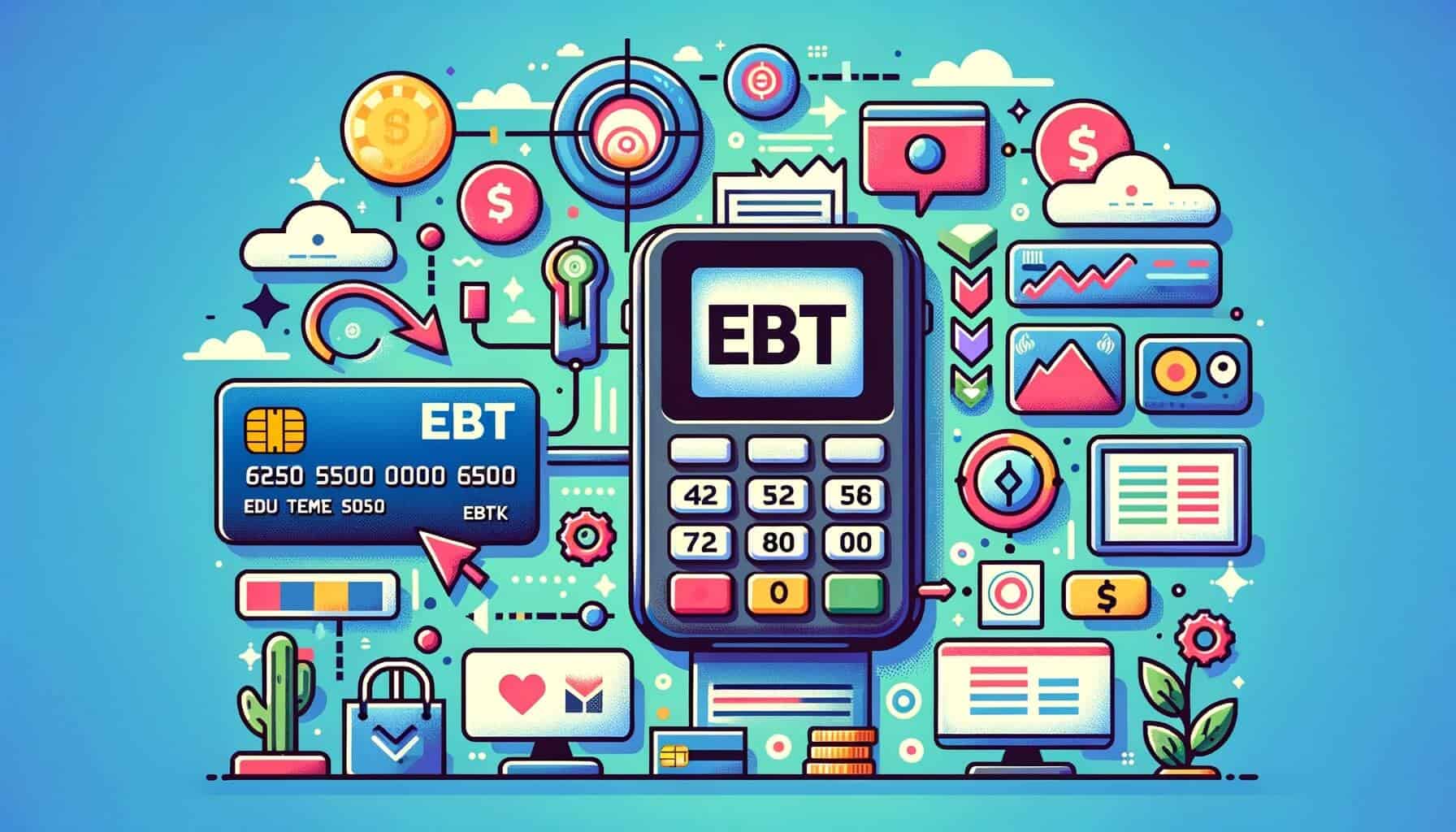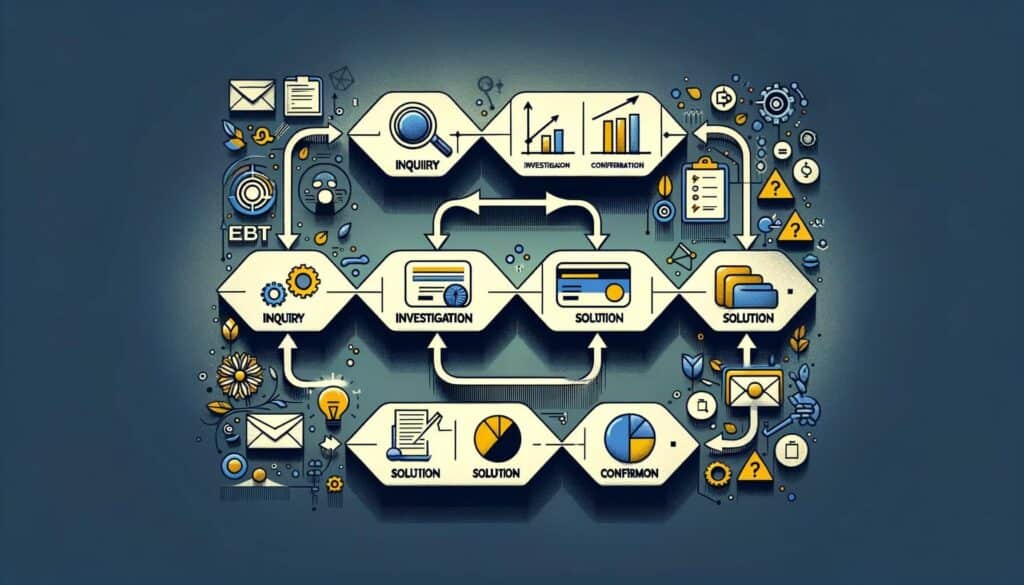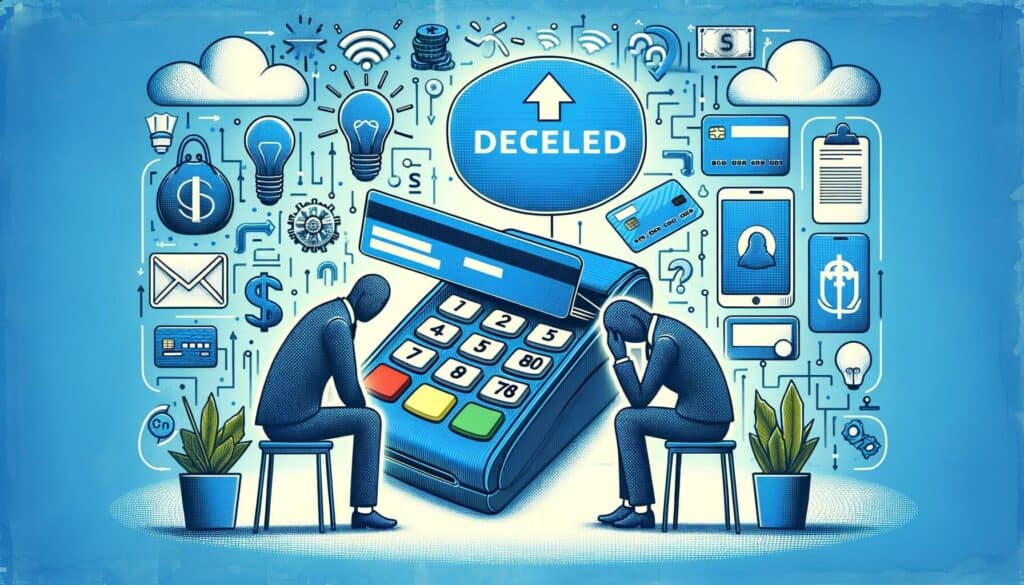
By Sharon Watson February 22, 2025
Electronic Benefit Transfer (EBT) is a system that allows recipients of government assistance programs, such as the Supplemental Nutrition Assistance Program (SNAP), to receive and use their benefits electronically. While EBT offers convenience and accessibility, it is not without its challenges. Users may encounter various issues when using their EBT cards, ranging from activation problems to declined transactions.
In this comprehensive guide, we will explore the common problems faced by EBT users and provide troubleshooting tips to resolve them effectively.
Understanding the EBT System and its Common Problems

Before delving into the troubleshooting process, it is essential to have a basic understanding of the EBT system and the common problems that users may encounter. EBT operates through a network of state agencies, financial institutions, and retailers. When a user receives their benefits, they are loaded onto an EBT card, which functions similarly to a debit card. The card can be used at authorized retailers to purchase eligible items.
However, despite the system’s efficiency, users may face several issues. These problems can range from card activation difficulties to payment processing errors. By familiarizing ourselves with these common problems, we can better troubleshoot and resolve them.
Troubleshooting EBT Card Activation Issues

One of the primary issues users may encounter is difficulty activating their EBT cards. Activation is a crucial step in the process, as it allows users to access their benefits. If you are experiencing problems with card activation, follow these troubleshooting steps:
1. Verify the Activation Process: Each state may have a slightly different activation process. Visit your state’s EBT website or contact the customer service helpline to understand the specific steps required to activate your card.
2. Check for Errors: Ensure that you have entered the correct information during the activation process. Double-check your card number, personal identification number (PIN), and any other required details.
3. Contact Customer Service: If you have followed the activation process correctly and are still unable to activate your card, reach out to the customer service helpline. They can provide guidance and troubleshoot the issue further.
4. Visit a Local Office: In some cases, visiting a local EBT office may be necessary. They can assist you in person and resolve any activation issues you may be facing.
5. Be Patient: Activation issues can sometimes be caused by system glitches or delays. If you have followed all the steps correctly, it may simply be a matter of waiting for the system to process your activation request. Give it some time before attempting to activate your card again.
6. Keep Documentation: Throughout the activation process, make sure to keep a record of any correspondence, reference numbers, or confirmation emails. These can be helpful if you need to escalate the issue or provide evidence of attempted activation.
7. Seek Additional Assistance: If all else fails, consider reaching out to local advocacy groups or organizations that specialize in assisting individuals with EBT-related issues. They may have additional resources or contacts that can help resolve your activation problem.
8. Stay Informed: Keep yourself updated on any changes or updates to the EBT system in your state. This can help you troubleshoot any activation issues more effectively and stay ahead of potential problems.
9. Be Persistent: Resolving activation issues may require persistence and patience. Don’t give up easily and continue to seek assistance until the problem is resolved.
10. Document Your Efforts: If you have exhausted all options and are still unable to activate your EBT card, document your efforts and contact your state’s EBT office to escalate the issue. They may be able to provide further guidance or resolve the problem directly.
Resolving EBT Card Balance Inquiries and Discrepancies

Another common issue faced by EBT users is related to balance inquiries and discrepancies. It is crucial to keep track of your EBT card balance to ensure you have sufficient funds for your purchases. If you encounter any balance-related problems, follow these troubleshooting steps:
1. Check Your Balance Online: Most states provide online portals or mobile applications that allow users to check their EBT card balance. Visit your state’s EBT website or download the relevant app to access your balance information.
2. Contact Customer Service: If you are unable to access your balance online or notice any discrepancies, contact the customer service helpline. They can provide real-time information and investigate any issues with your account.
3. Keep Track of Transactions: Maintain a record of your EBT card transactions, including dates, times, and locations. This documentation can be useful when discussing discrepancies with customer service or resolving any payment-related problems.
4. Report Suspicious Activity: If you notice any unauthorized transactions or suspicious activity on your EBT card, report it immediately to the customer service helpline. They can investigate the issue and take appropriate action to protect your account.
5. Understand Transaction Processing Times: EBT transactions may take some time to process and reflect in your balance. Be patient and allow sufficient time for the system to update before assuming a discrepancy.
6. Verify Eligible Purchases: Ensure that you are using your EBT card for eligible purchases only. Certain items, such as alcohol, tobacco, and non-food items, may not be covered by your benefits. Familiarize yourself with the list of eligible items to avoid any confusion or discrepancies.
7. Keep Receipts: After each transaction, make sure to keep your receipts. These can serve as proof of purchase and help resolve any discrepancies or disputes that may arise.
8. Request a Transaction History: If you are unable to resolve a balance inquiry or discrepancy through the online portal or customer service helpline, request a transaction history from your state’s EBT office. This document will provide a detailed overview of your card activity and can be used to identify any errors or discrepancies.
9. Escalate the Issue: If you have followed all the troubleshooting steps and are still unable to resolve the balance inquiry or discrepancy, escalate the issue to a supervisor or manager. They may have additional resources or authority to address the problem effectively.
10. Stay Vigilant: Regularly monitor your EBT card balance and transactions to identify any potential issues early on. By staying vigilant, you can address problems promptly and minimize any negative impact on your benefits.
Addressing EBT Card Declined Transactions

EBT card declined transactions can be frustrating and inconvenient, especially when you rely on your benefits for essential purchases. If you encounter a declined transaction, follow these troubleshooting steps:
1. Verify Available Balance: Before assuming a problem with your card, ensure that you have sufficient funds available. Check your balance online or contact the customer service helpline to confirm the available amount.
2. Check for Technical Issues: In some cases, declined transactions may be caused by technical issues at the retailer’s end. Ask the cashier or store manager if they are experiencing any system problems that could be affecting EBT transactions.
3. Confirm Eligible Purchases: Ensure that you are using your EBT card for eligible purchases only. Certain items, such as hot prepared foods or non-food items, may not be covered by your benefits. Familiarize yourself with the list of eligible items to avoid any declined transactions.
4. Verify Card Expiration: Check the expiration date on your EBT card. If your card has expired, you will need to contact your state’s EBT office to request a replacement card.
5. Check for Card Damage: Inspect your EBT card for any signs of damage, such as cracks or scratches. If your card is damaged, contact your state’s EBT office to request a replacement card.
6. Confirm PIN Accuracy: Double-check that you are entering your PIN correctly. Even a minor error can result in a declined transaction. If you are unsure of your PIN or suspect it may be incorrect, contact the customer service helpline to reset it.
7. Contact Customer Service: If you have verified all the above factors and are still experiencing declined transactions, contact the customer service helpline. They can investigate the issue further and provide guidance on resolving the problem.
8. Seek Alternative Payment Methods: If you are unable to resolve the declined transaction issue immediately, consider using an alternative payment method, such as cash or another debit card, for your purchase. This will ensure that you can still obtain the necessary items while troubleshooting the problem with your EBT card.
9. Document the Issue: Keep a record of any declined transactions, including the date, time, and location. This documentation can be helpful when discussing the issue with customer service or escalating the problem if necessary.
10. Escalate the Issue: If you have followed all the troubleshooting steps and are still unable to resolve the declined transaction problem, escalate the issue to a supervisor or manager. They may have additional resources or authority to address the problem effectively.
Fixing EBT Card PIN and Security Concerns
EBT card PIN and security concerns are of utmost importance to protect your benefits and personal information. If you suspect any issues with your PIN or encounter security-related problems, follow these troubleshooting steps:
1. Change Your PIN Regularly: To maintain the security of your EBT card, change your PIN regularly. Choose a unique and strong PIN that is not easily guessable.
2. Keep Your PIN Confidential: Never share your PIN with anyone, including family members or friends. Your PIN should be known only to you to prevent unauthorized access to your benefits.
3. Memorize Your PIN: Avoid writing down your PIN or storing it in easily accessible locations. Memorize your PIN to minimize the risk of it falling into the wrong hands.
4. Report Lost or Stolen Cards Immediately: If your EBT card is lost or stolen, report it immediately to the customer service helpline. They can deactivate your card to prevent unauthorized use and issue a replacement card.
5. Protect Your Card: Keep your EBT card in a safe and secure location. Treat it as you would a debit or credit card to prevent loss or theft.
6. Be Wary of Phishing Attempts: Be cautious of any emails, phone calls, or text messages requesting your EBT card information or personal details. EBT offices will never ask for this information through these channels. If you receive any suspicious communication, report it to the customer service helpline.
7. Monitor Your Account Activity: Regularly review your EBT card transactions and balance to identify any unauthorized activity. If you notice any suspicious transactions, report them immediately to the customer service helpline.
8. Use Secure Websites and Apps: When accessing your EBT card information online, ensure that you are using secure websites or mobile applications. Look for the padlock symbol in the website’s URL or verify the app’s authenticity before entering any personal information.
9. Be Cautious at ATMs and Retailers: When using your EBT card at ATMs or retailers, be aware of your surroundings and ensure that no one is attempting to observe or record your PIN. Cover the keypad when entering your PIN to prevent unauthorized access.
10. Report Security Concerns: If you suspect any security concerns or believe that your EBT card information has been compromised, report it immediately to the customer service helpline. They can assist you in securing your account and preventing any further unauthorized access.
Solving EBT Card Replacement and Lost/Stolen Card Problems
Losing or having your EBT card stolen can be a stressful experience. However, there are steps you can take to resolve the issue and obtain a replacement card. If you find yourself in this situation, follow these troubleshooting steps:
1. Report the Loss or Theft Immediately: As soon as you realize that your EBT card is lost or stolen, report it immediately to the customer service helpline. They can deactivate your card to prevent unauthorized use and protect your benefits.
2. Provide Necessary Information: When reporting the loss or theft, be prepared to provide your personal information, such as your name, address, and social security number. This information will help the customer service representative verify your identity and assist you in obtaining a replacement card.
3. Follow the Replacement Process: Each state may have a slightly different process for replacing lost or stolen EBT cards. Visit your state’s EBT website or contact the customer service helpline to understand the specific steps required to obtain a replacement card.
4. Verify Identification Requirements: Some states may require additional identification documents or proof of eligibility when requesting a replacement card. Familiarize yourself with the necessary requirements to ensure a smooth replacement process.
5. Request Expedited Replacement: If you are in urgent need of a replacement card, such as for essential purchases, inquire about expedited replacement options. Some states may offer expedited services for certain situations.
6. Keep Documentation: Throughout the replacement process, make sure to keep a record of any correspondence, reference numbers, or confirmation emails. These can be helpful if you need to escalate the issue or provide evidence of the lost or stolen card.
7. Monitor Your Account: Regularly check your EBT card balance and transactions to ensure that no unauthorized activity occurs after reporting the loss or theft. If you notice any suspicious transactions, report them immediately to the customer service helpline.
8. Protect Your New Card: Once you receive your replacement card, take necessary precautions to protect it. Follow the PIN and security guidelines mentioned earlier to prevent any future issues.
9. Update Automatic Payments: If you have any automatic payments linked to your lost or stolen EBT card, update the payment information with your new card details. This will ensure that your benefits are not interrupted and that your bills are paid on time.
10. Stay Vigilant: Even after obtaining a replacement card, remain vigilant and monitor your account activity regularly. Promptly report any suspicious transactions or security concerns to the customer service helpline.
Overcoming EBT Payment Processing Errors
EBT payment processing errors can occur for various reasons, such as technical glitches, system maintenance, or network connectivity issues. If you encounter payment processing errors, try the following troubleshooting steps:
Retry the Transaction: In some cases, payment processing errors may be temporary. Retry the transaction after a few minutes to see if the issue resolves itself.
Check Network Connectivity: Ensure that you have a stable internet connection or cellular network signal if you are using a mobile device for EBT transactions. Poor connectivity can lead to payment processing errors.
Contact Customer Service: If the payment processing error persists, contact customer service for assistance. They can help troubleshoot the issue and provide guidance on resolving the problem.
Keep Documentation: If you encounter payment processing errors, keep a record of the error message, date, time, and any other relevant details. This information will be helpful when contacting customer service for support.
Dealing with EBT Retailer and Merchant Acceptance Issues
EBT retailer and merchant acceptance issues can be frustrating for cardholders, as they may limit the availability of authorized locations to use their benefits. If you are experiencing acceptance issues, consider the following troubleshooting tips:
Verify Retailer Authorization: Ensure that the retailer you are visiting is authorized to accept EBT payments. You can usually find a list of authorized retailers on the official website or mobile app provided by your state’s EBT program.
Contact Customer Service: If you are unable to find authorized retailers in your area or are experiencing acceptance issues, contact customer service for assistance. They can provide guidance on alternative locations or address any concerns you may have.
Advocate for Acceptance: If you frequently encounter acceptance issues at retailers in your area, consider advocating for EBT acceptance. Contact your local government representatives or the agency that administers your benefits to express your concerns and request increased acceptance options.
FAQs
Q1. Can I use my EBT card to purchase non-food items?
Answer: No, EBT benefits can only be used to purchase eligible food items. Non-food items, such as alcohol or tobacco, are not eligible for purchase with EBT benefits.
Q2. How can I check my EBT card balance?
Answer: You can check your EBT card balance by calling the customer service helpline or visiting the EBT website. You will need to provide your card number and PIN to access your balance information.
Q3.: What should I do if my EBT card is lost or stolen?
Answer: If your EBT card is lost or stolen, contact the customer service helpline immediately to report the incident. They will be able to deactivate your card and issue a replacement.
Q5. Can I use my EBT card in a different state?
Answer: Yes, EBT cards can be used in any state. However, it is important to note that certain eligibility requirements and eligible items may vary from state to state.
Q6. What should I do if my EBT card is damaged or not working?
If your EBT card is damaged or not working, contact the customer service helpline to request a replacement card. They will guide you through the process of obtaining a new card.
Conclusion
EBT payment issues can be frustrating and disruptive, but with the right troubleshooting steps, they can be resolved effectively. By understanding the common problems faced by EBT users and following the troubleshooting solutions provided in this guide, you can overcome these issues and ensure smooth access to your benefits. Remember to contact the EBT customer service helpline for further assistance if needed.